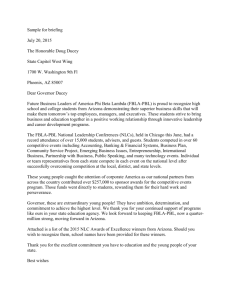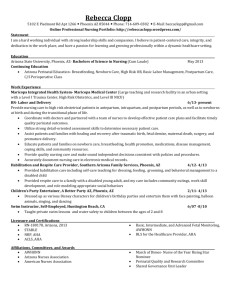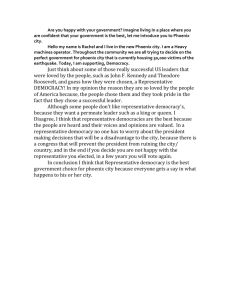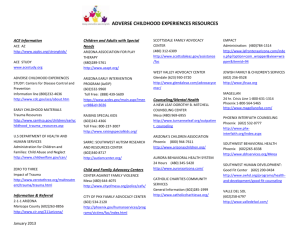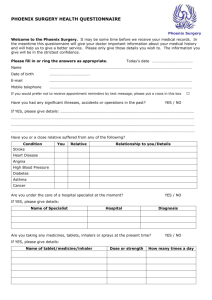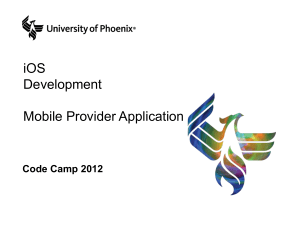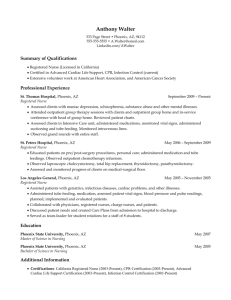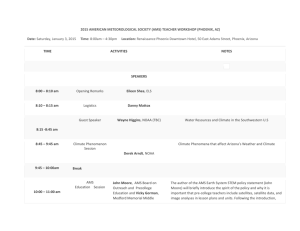is phoenix sustainable
advertisement
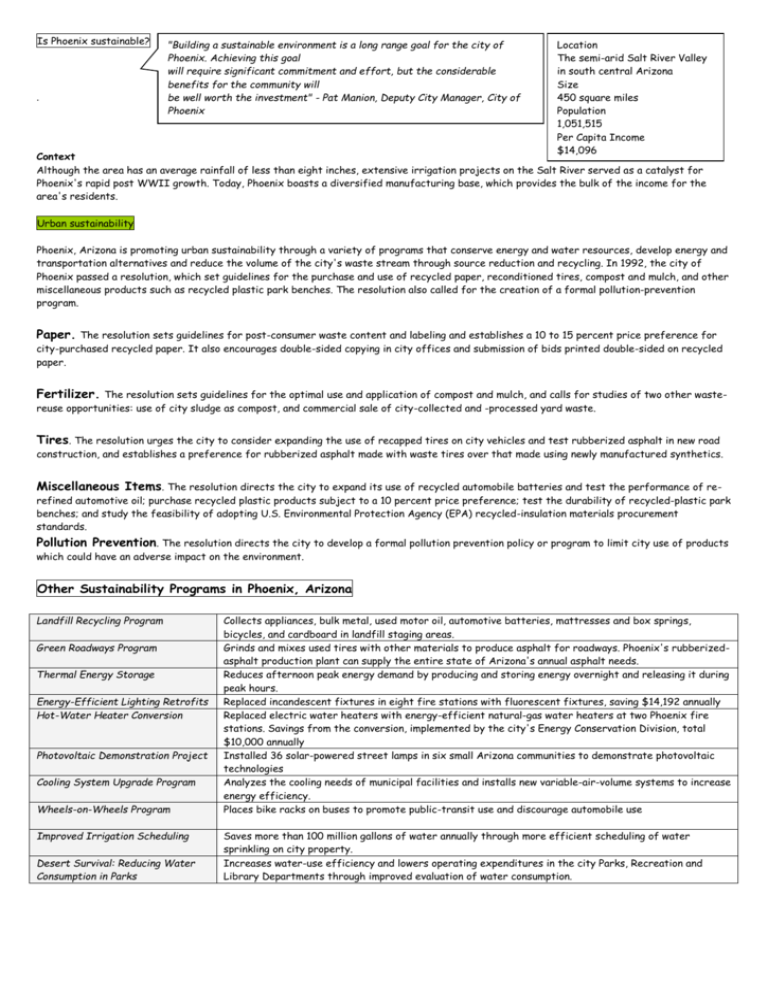
Is Phoenix sustainable? . "Building a sustainable environment is a long range goal for the city of Phoenix. Achieving this goal will require significant commitment and effort, but the considerable benefits for the community will be well worth the investment" - Pat Manion, Deputy City Manager, City of Phoenix Location The semi-arid Salt River Valley in south central Arizona Size 450 square miles Population 1,051,515 Per Capita Income $14,096 Context Although the area has an average rainfall of less than eight inches, extensive irrigation projects on the Salt River served as a catalyst for Phoenix's rapid post WWII growth. Today, Phoenix boasts a diversified manufacturing base, which provides the bulk of the income for the area's residents. Urban sustainability Phoenix, Arizona is promoting urban sustainability through a variety of programs that conserve energy and water resources, develop energy and transportation alternatives and reduce the volume of the city's waste stream through source reduction and recycling. In 1992, the city of Phoenix passed a resolution, which set guidelines for the purchase and use of recycled paper, reconditioned tires, compost and mulch, and other miscellaneous products such as recycled plastic park benches. The resolution also called for the creation of a formal pollution-prevention program. Paper. The resolution sets guidelines for post-consumer waste content and labeling and establishes a 10 to 15 percent price preference for city-purchased recycled paper. It also encourages double-sided copying in city offices and submission of bids printed double-sided on recycled paper. Fertilizer. The resolution sets guidelines for the optimal use and application of compost and mulch, and calls for studies of two other wastereuse opportunities: use of city sludge as compost, and commercial sale of city-collected and -processed yard waste. Tires. The resolution urges the city to consider expanding the use of recapped tires on city vehicles and test rubberized asphalt in new road construction, and establishes a preference for rubberized asphalt made with waste tires over that made using newly manufactured synthetics. Miscellaneous Items. The resolution directs the city to expand its use of recycled automobile batteries and test the performance of re- refined automotive oil; purchase recycled plastic products subject to a 10 percent price preference; test the durability of recycled-plastic park benches; and study the feasibility of adopting U.S. Environmental Protection Agency (EPA) recycled-insulation materials procurement standards. Pollution Prevention. The resolution directs the city to develop a formal pollution prevention policy or program to limit city use of products which could have an adverse impact on the environment. Other Sustainability Programs in Phoenix, Arizona Landfill Recycling Program Green Roadways Program Thermal Energy Storage Energy-Efficient Lighting Retrofits Hot-Water Heater Conversion Photovoltaic Demonstration Project Cooling System Upgrade Program Wheels-on-Wheels Program Improved Irrigation Scheduling Desert Survival: Reducing Water Consumption in Parks Collects appliances, bulk metal, used motor oil, automotive batteries, mattresses and box springs, bicycles, and cardboard in landfill staging areas. Grinds and mixes used tires with other materials to produce asphalt for roadways. Phoenix's rubberizedasphalt production plant can supply the entire state of Arizona's annual asphalt needs. Reduces afternoon peak energy demand by producing and storing energy overnight and releasing it during peak hours. Replaced incandescent fixtures in eight fire stations with fluorescent fixtures, saving $14,192 annually Replaced electric water heaters with energy-efficient natural-gas water heaters at two Phoenix fire stations. Savings from the conversion, implemented by the city's Energy Conservation Division, total $10,000 annually Installed 36 solar-powered street lamps in six small Arizona communities to demonstrate photovoltaic technologies Analyzes the cooling needs of municipal facilities and installs new variable-air-volume systems to increase energy efficiency. Places bike racks on buses to promote public-transit use and discourage automobile use Saves more than 100 million gallons of water annually through more efficient scheduling of water sprinkling on city property. Increases water-use efficiency and lowers operating expenditures in the city Parks, Recreation and Library Departments through improved evaluation of water consumption. Fiscal Benefits $180,000 in annual savings from tire recap, automotive battery recycling, and rubberized asphalt programs $980,000 in landfill space saved each year by recycling vegetative materials $450,000 per year from producing mulch at city landfills, using it as fertilizer in city operations, and sales to commercial distributors $74 per recycled plastic park bench per year in maintenance and repair costs Environmental Benefits 40,000 tons of vegetative materials diverted from the waste stream annually 70,000 tires recycled each year 1,300 automotive batteries recycled annually Increased environmental and recycled product awareness among city employees and vendors. OR NOT? URBAN SPRAWL Phoenix sprawls into the desert at the rate of an acre an hour The pictures from the end of March show 5,000 more houses than the ones taken three months earlier. Houses squeeze through the gap between two Indian reservations and follow the highways into the desert, which they are consuming at an acre an hour. WATER SUPPLY In 1999, Phoenix residents used 104 billion gallons of water In Phoenix, each person uses about 175 gallons each day at home. About 96 percent of the water used by Phoenix comes from surface sources, Salt, Verde and Colorado rivers; the remaining 4 percent comes from wells. The average rainfall in Phoenix is about 7.5 inches per year Arizona's desert climate directly affects our economy and quality of life. All economic activit y, including mining, irrigated agriculture, and growth of cities occurs only where dependable water supplies are available. As a result, Arizona places a high priority on managing its limited water to ensure that secure water supplies are available now and well into the future AIR POLLUTION Most of the air pollution in the Phoenix area is the result of the use of automobiles. The dry, Southwest climate keeps night time pollutants trapped near the ground until warmed by the sun the following day The Brown Cloud consists of tiny particles of carbon and nitrogen dioxide gas. These substances are deposited into the air mostly from burning fossil fuels. Cars, construction equipment, power plants, lawn mowers, leaf blowers and more contribute to the cloud. According to the Brown Cloud Summit's final report, this phenomenon not only obscures the once clearly visible mountains surrounding the Valley, it also contributes to higher than average incidents of health problems, especially respiratory ailments including allergies and asthma, leading to higher than normal mortality rates from heart and lung diseases. POPULATION GROWTH The population of Arizona has increased by 40% since 1990
